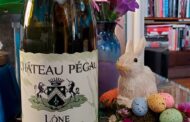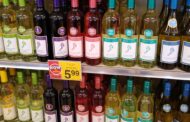Layne’s Wine Gig Presents
FLAVES
By Layne V. Witherell
This article is about the flavor of the week wine club, or natural wine activists on a roll. There is nothing like a jingoistic slogan being turned into a serious marketing tool.
Likewise, otherwise intelligent journalists blindly signed onto Wine Enthusiast’s article, “The Best Wine Shops of 2023.” Sure, their picks for Maine are two good stores, and I can’t argue that, but the entire article is a well thought out and orchestrated propaganda piece. There is more to Portland and Maine wine stores than that niche called “natural wine.”
Wine has always been subjective, but the natural wine movement has taken it up to an us-vs.-them vibe. In other words, commercially produced wine drinking bozos versus the pure of heart, the save the world types.
“Natural wine” is simply a cleverly organized, self-serving dogma that incorporates the small grower, importer, distributor, small store, and their social media wine choir presence. In the words of Michel Bittane (France’s greatest wine critic), “Natural wine is a fantasy of marginal producers.” But more than that, they are taking you, the unsuspecting reader, along for the fantasy ride as well.
Using “geekiness and arcane trivia” (Jason Wilson), together with fashionable cheeky slogans like “glou glou” and “crushable,” many wineries, distributors, and stores have managed to pass off far too many amateurish, sloppy, poorly made wines – while charging serious money per bottle – as masterpieces. All because of the natural wine choir’s hype of their “dedicated community events and fundraisers,” (Wine Enthusiast).
It’s funny how the dialog on wine has shifted from uniform quality to the hymn of the social good. Jayson Wilson, the wine writer, summed it up, “Many of the wines resemble small mammals that smell of bong resin.”
NATURAL WINE: WHAT IT IS
“Hygiene and consistence have been the main reason for the new world’s success.”
-Tim Mondavi
No commercial modern technology, just artisanal and rustic winemaking. No or low intervention, just you and nature. Natural yeasts versus commercially developed yeasts. And boho labeling, meaning unidentifiable grapes and places of origin as part of the mystique. Ultimately, winemaking flaws are marketed as attributes. Yet, expect high prices, as these are small artisans, accompanied by likeminded and similarly sized distributors and stores.
WHAT YOU GET
“Mother nature is a mean old lady and mankind has to help make wine.”
-Joe Heitz, winemaker
The tasting experience varies from the sublime to the awful. Natural wines are a singular experience compared to commercially produced wines that strive for sameness.
WHO DO I LIKE? FAVORITE WINE SHOPS & WINES
I go out there and personally buy wine for columns, gigs, and dinners with friends. If I am going to seek out a $15-$40 bottle, it won’t be an unpredictable natural wine that is made in a yurt. I expect an experience that will be paired with food.
Yes, I have tasted and spent my fair share of money on natural wines, as well as a vast array of the world’s bounty. They are curious, worth a try, but far from the greatest. I have had the greatest and will gladly send you a list, decade by decade.
There are many great wine shops in the area, and sadly I have room within this column to only mention a few…
OLD PORT WINE MERCHANT, 223 Commercial St.
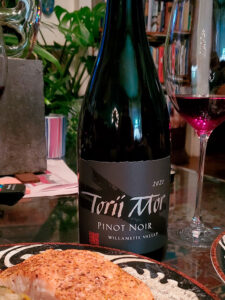
I have been going to Jacques’ store for 17 years. He is a big presence, a loud, assertive potentate surveying his kingdom, and this guy knows his wine.
The picture of the Torii Mor, Willamette Valley Pinot Noir was our last evening’s salmon accompaniment. Classic cherries, a touch of mushroom with a velvet cloak.
I asked for a $35.00 pinot noir, and he recommended this masterful wine at $26.99. Thank you, Jacques. Great selection, fair prices. Recommendations galore.
RSVP DISCOUNT BEVERAGE, 887 Forest Ave.
Alsatian wines are my hot button, and they not only know them but revel in them.
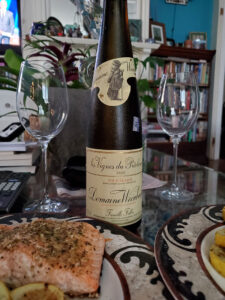
Photo is of Les Vignes des Precheur, Domaine Weinbach, 2020, $20, from Alsace. Dinner and a show at home (the movie is “St. Vincent” – a Bill Murray classic). Better than Pinot Grigio is Pinot Blanc and its blended friends, which are crisper and more refreshing and vastly more interesting grapes. The wine oozes of stone fruit, beeswax, and a touch of flint. A remarkable recommendation.
Its little Alsatian sibling is Wolfberger Pinot Blanc, 2020, $15. “A halfway house between freshness and opulence,” says Jancis Robinson. Ask Rachel for her thoughts on Alsatian wines – she has many. Excellent selection of everything, including many sakes!
BROWNE TRADING MARKET, 262 Commercial St.
You can’t say no to a store that has a wall of White Burgundy, the mineral essence of the original chardonnay vine. Matrot Bourgogne, 2020, $25-$30 per bottle. The ultimate wine with lobster. Bring that gold card as they are the caviar headquarters and have a vast selection of excellent wines. They will pair up your selection with a little fresh off the boat toro – tuna belly as an artform.
In a world of “Help Wanted” signs, the “Big Three” as I refer to these stores have long been a beacon of both quality service and wine consistency.
TRADER JOE’S, 87 Marginal Way
Portland is a city where people have “gigs.” I have three. This column, Layne’s Wine Gig talk and tasting at Blue (650 Congress St.), and as the “wine guy” at Trader Joe’s. The three lead separate lives as well they should. Far too many writers are more reps than journalists.
Trader Joe’s is a wildly popular store with a loyal audience that expects great customer service. I experience the same, “What do I pair with lobster and a jellyfish sauce?” questions as many, if not more, times a day than any natural wine store or fine wine shop.
The way I prepare my day is by doing my homework at 6:30 a.m., going to my phone and reading the blog winebusiness.com– the unabashed wine pro news. Also, for a chuckle, I scroll down wineberserkers.com for snarky wisdom from the pros, followed by Eat/Drink/Lucky and The Portland Food Map. Some coffee and I’m ready to go.
As to my favorite TJ’s wines they are:
Barbelot Cabernet/Syrah from the Languedoc at $6.49 a bottle.
Fruity, simple French bistro wine for a Tuesday night or with pizza. I was about ten years ahead of my time when as a wine broker in the area in the early 1980’s we discovered and shipped some of the first Languedoc bistro wines to the U.S.
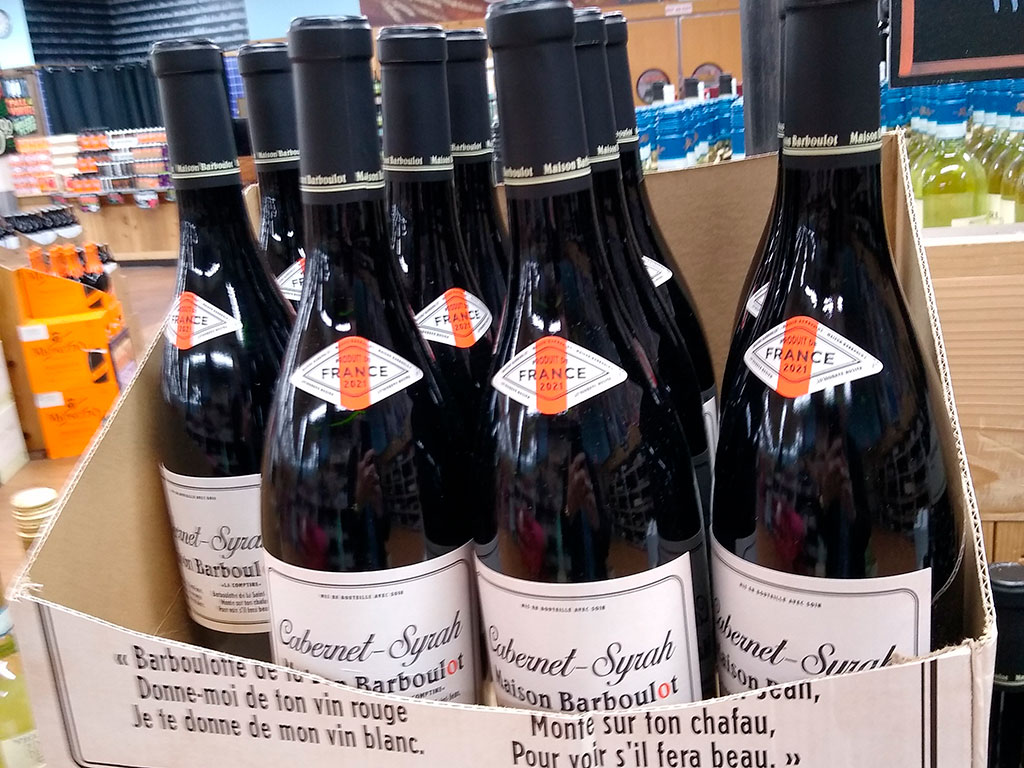
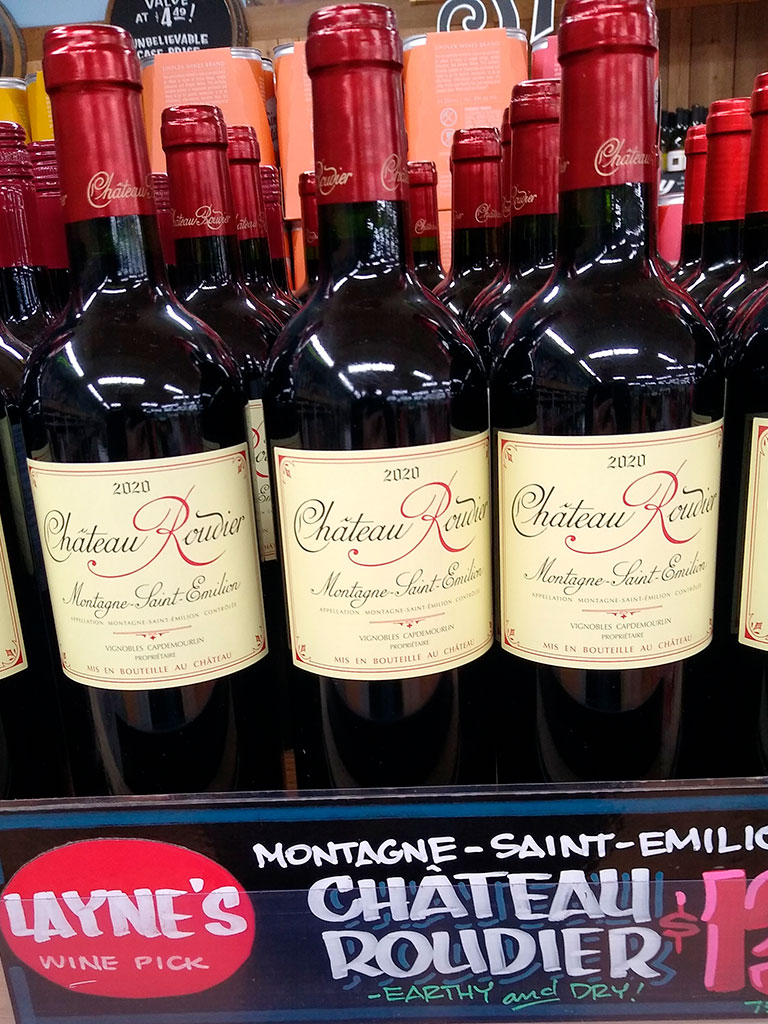
Chateau Roudier, Montagne-Saint-Emilion, 2020, $13.99.
A Bordeaux blend of 65% merlot, 25% cabernet franc, and 10% cabernet sauvignon. Quality and consistency, although this vintage is a bit young and needs some air. “This is an impressive wine,” notes wine writer Clive Coates, and I couldn’t agree more.
My Last Word on Natural Wine
If I want an adventure for my $40, it will be Alsace, Oregon, Napa, Bordeaux, and the occasional Amarone or first-class Montepulciano d’ Abruzzo instead of a wine that may taste of Kim Chee or balsamic vinegar.
As the hipsters age and tire of natural wine, together with singing in their choir, they need to look at what is coming. Gen Z (the twenty-somethings) are slavish to form with their influencers, selfie sticks, Paris Hilton looks combined with their beverage of choice – a tequila-based seltzer with a kiwi/guava overtone made by an industrial giant.
And they thought the people who make and sell commercial chardonnay were bad! LOOK OUT!

